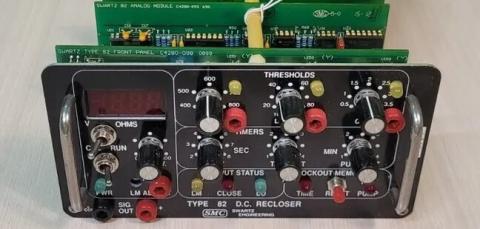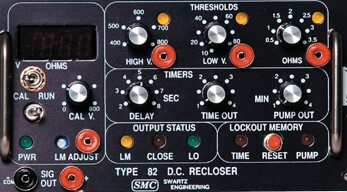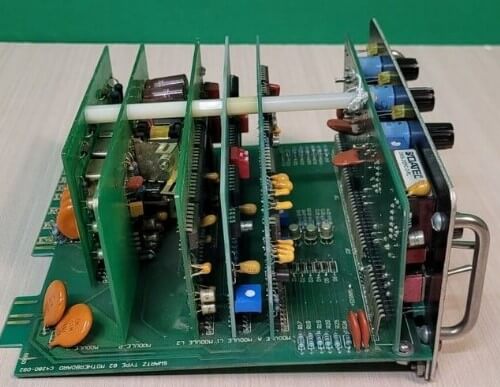
The railway industry depends on a wide range of electrical components to ensure safe and efficient train operations. One of the most critical components in railway signaling and control systems is DC relays. These devices play a fundamental role in ensuring that trains operate within a secure framework, preventing collisions and optimizing overall railway traffic management.
Understanding DC Relays in the Railway Industry
DC relays are electromagnetic switches that operate using direct current (DC). They function by opening or closing electrical circuits in response to signals from train control systems. Unlike AC relays, which function with alternating current, DC relays are preferred in railway applications due to their reliability, efficiency, and suitability for low-voltage control circuits.
Railway infrastructure is vast and complex, requiring highly dependable control systems. DC relays contribute to these systems by ensuring that electrical signals are correctly transmitted and interpreted across various railway operations, from track circuits to level crossing controls.
Key Functions of DC Relays in Railway Operations
1. Signaling and Train Control
One of the most crucial roles of DC relays in railways is in signaling systems. Rail signals depend on relay circuits to manage train movements safely. These relays receive signals from track circuits and interlocking systems to determine whether a track section is occupied or clear. If a train is detected in a specific section, the relay ensures that a red signal is displayed, preventing other trains from entering the same section.
2. Track Circuit Operations
DC relays are extensively used in track circuit operations to detect train presence. Track circuits work by passing a low-voltage DC current through the rails. When a train's wheels and axles bridge the circuit, it causes a change in the current flow, which activates or deactivates the relay. This information is then used by railway control systems to indicate track occupancy.
3. Interlocking Systems
Interlocking systems are essential for coordinating the movement of trains through complex rail networks, including switches and crossings. DC relays help in controlling switch motors and ensuring that signals and track alignments are correctly set before a train proceeds. If a relay detects an improper alignment or a fault in the system, it can trigger automatic braking or prevent signal clearance to avoid accidents.
4. Level Crossing Controls
DC relays are also used in level-crossing systems to activate warning signals and barriers when a train approaches a road crossing. These relays receive signals from track circuits, ensuring that barriers are lowered in time to prevent vehicles and pedestrians from crossing the tracks when a train is nearby.
5. Emergency Braking Systems
In emergency situations, DC relays help to activate braking mechanisms. If a track circuit detects an obstacle or malfunction ahead, a relay can trigger an emergency brake command, helping to prevent collisions and ensure passenger safety.

GET IN TOUCH
In a hurry? Call us at 276-285-3841
Advantages of Using DC Relays in Railways
1. High Reliability
DC relays are known for their durability and long operational life. Since railway systems require continuous operation, relays must be able to withstand environmental challenges such as vibrations, dust, and temperature fluctuations. Properly maintained DC relays can function reliably for many years.
2. Fast Response Time
In railway applications, even a fraction of a second can make a difference in preventing accidents. DC relays operate with high-speed switching, ensuring timely responses to train movements and signaling changes.
3. Energy Efficiency
Compared to other electronic switching devices, DC relays consume relatively low power, making them an energy-efficient solution for large-scale railway operations.
4. Simplicity and Ease of Maintenance
DC relay systems have straightforward designs, making them easier to troubleshoot and repair. Railway engineers and technicians can quickly diagnose issues and replace faulty relays without significant downtime.
5. Compatibility with Existing Infrastructure
Many railway systems worldwide have relied on DC relays for decades. Their continued use ensures compatibility with existing control circuits, reducing the need for costly overhauls or system upgrades.
Modern Innovations in DC Relay Technology
As railway technology advances, DC relays are being integrated with more sophisticated electronic systems. Some of the latest innovations include:
- Smart Relays: Equipped with self-monitoring capabilities, these relays can detect internal faults and send alerts for preventive maintenance.
- Solid-State Relays: While traditional electromagnetic relays use mechanical contacts, solid-state versions offer faster switching times and improved durability.
- Wireless Relay Monitoring: New systems allow remote monitoring of relay performance, reducing the need for manual inspections and improving efficiency.
Challenges and Considerations in DC Relay Usage
Despite their advantages, DC relays must be properly maintained to ensure continued performance. Some of the challenges include:
- Wear and Tear: Over time, mechanical parts in traditional relays can degrade, requiring regular inspections and replacements.
- Environmental Factors: Extreme weather conditions, humidity, and dust can affect relay performance if not properly protected.
- Modernization Pressures: While DC relays are reliable, newer railway systems are exploring microprocessor-based solutions that offer even greater precision and automation.

GET IN TOUCH
In a hurry? Call us at 276-285-3841
Conclusion
DC relays remain an indispensable component in railway safety and control systems. Their ability to efficiently manage train movements, track circuit operations, and emergency braking mechanisms makes them a critical element of railway infrastructure. As technology continues to evolve, improvements in relay design and integration with digital systems will further enhance railway safety and efficiency.
Swartz Engineering continues to be at the forefront of developing high-quality DC relay solutions for the railway industry, ensuring that trains operate safely and reliably for years to come. Whether in traditional relay-based systems or modern digital enhancements, DC relays will remain a vital part of railway operations, safeguarding both passengers and railway infrastructure.
Products We Offer
Swartz Engineering strives to provide top-quality products to achieve our customer's needs. Our products include:
- Type 76 DC Relay
- Type 82 DC Relay
- Swartz Engineering’s Type 64 Ground Relay
- Type 32 Reverse Current Relay
- Type 150 DC
- CSM Shield Monitor
- Metal Oxide Surge Arrestors
- Transducers
- MVIS SL Slim-line Contactor
- Fully-tested Power Control Rooms
- Swartz Engineering’s Portable Substations
For nearly half a century, we have proudly led the industry in ensuring safety and efficiency. Swartz Engineering is a trusted family-owned company dedicated to providing top-notch power distribution solutions for the electrical industry. Contact us today!
